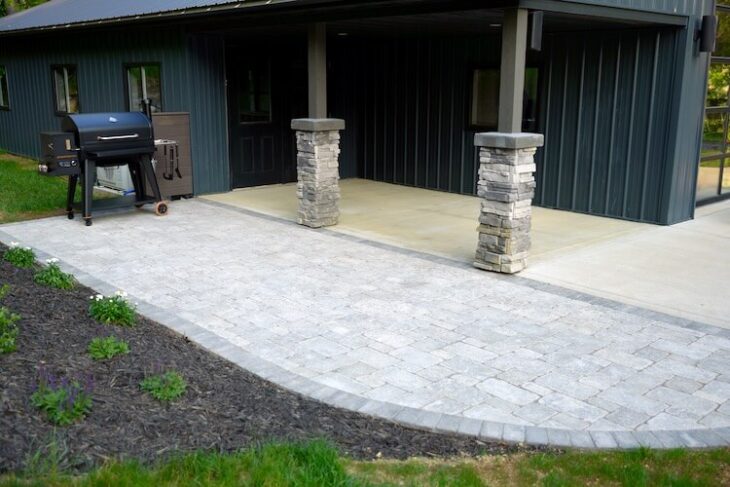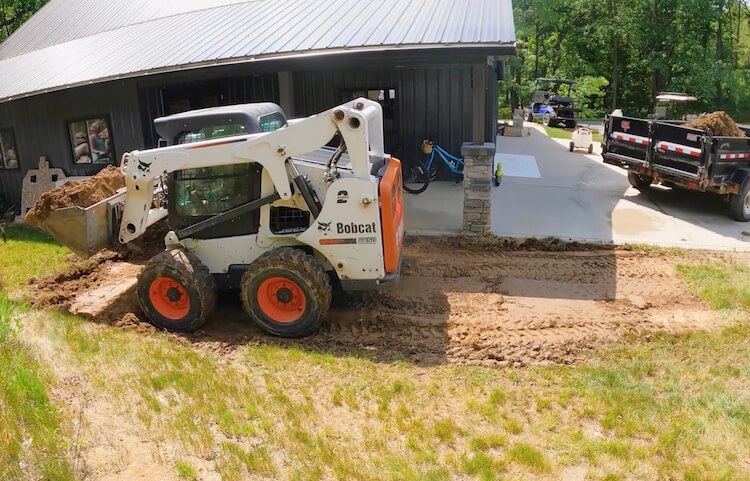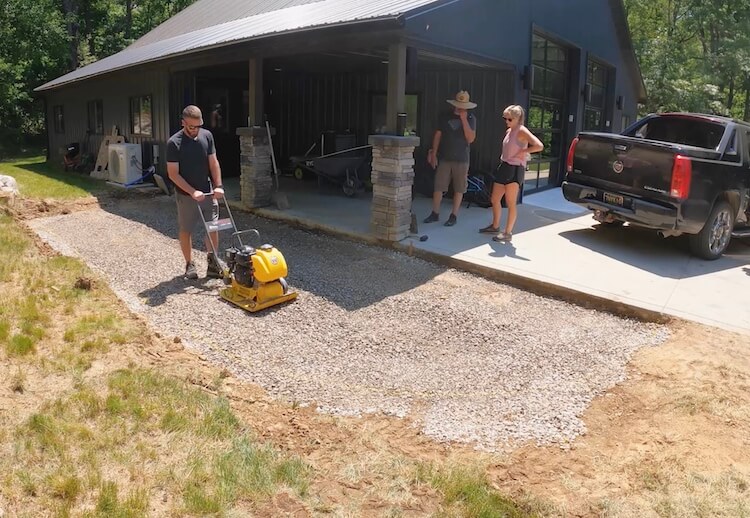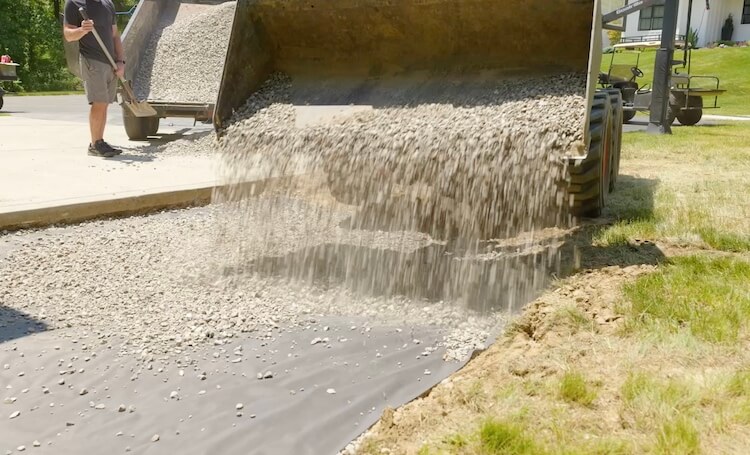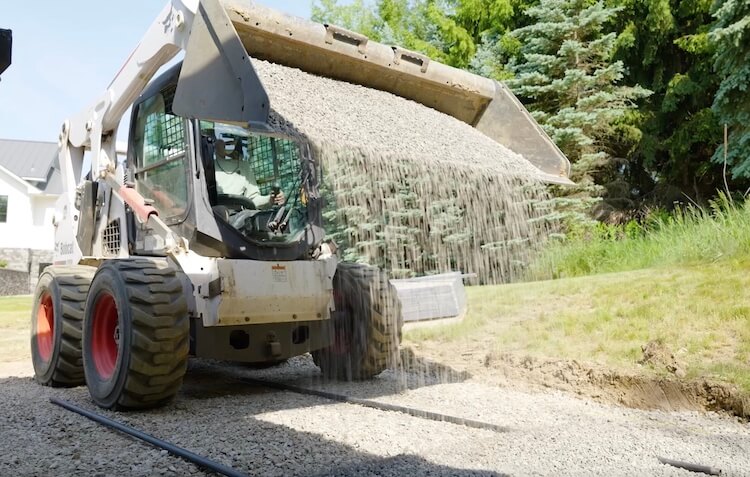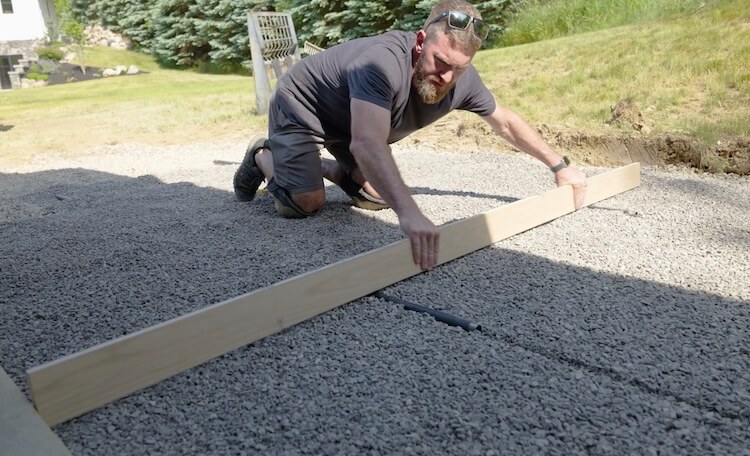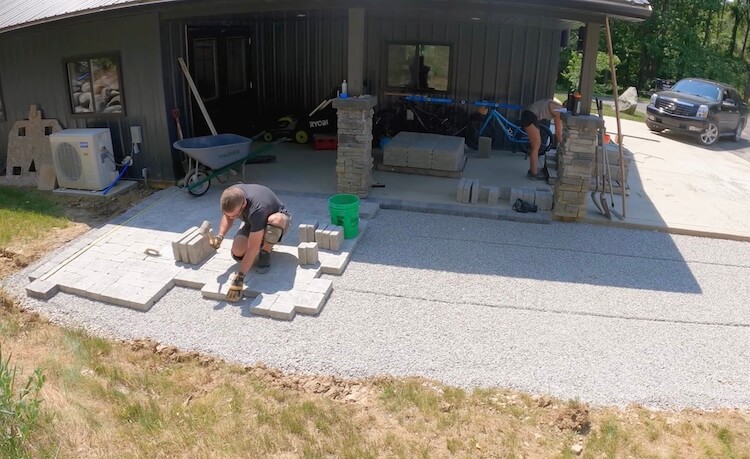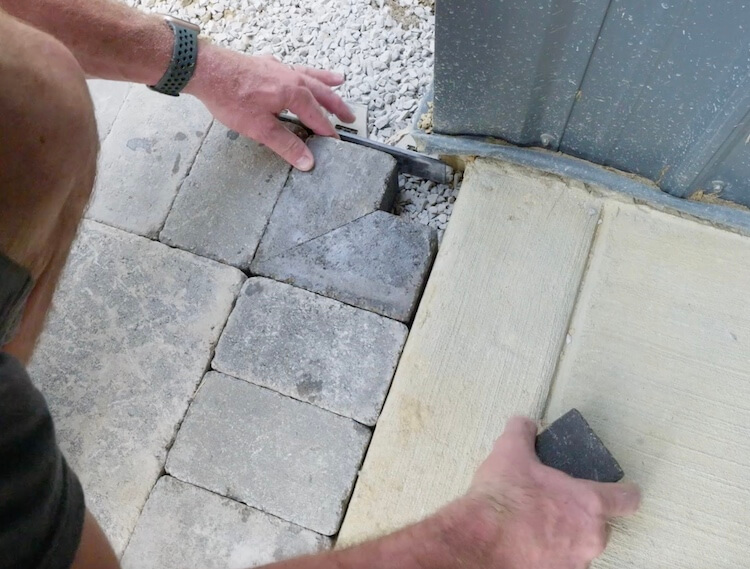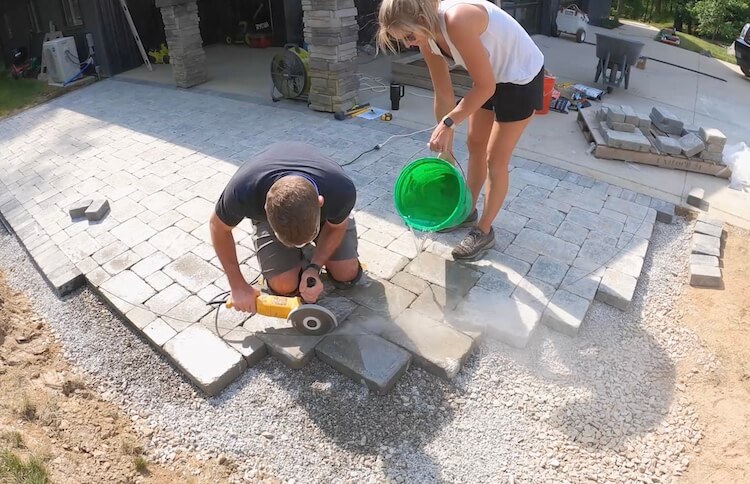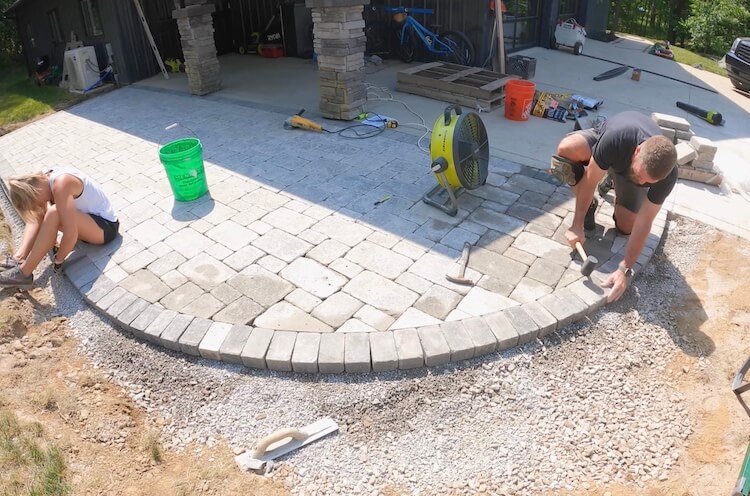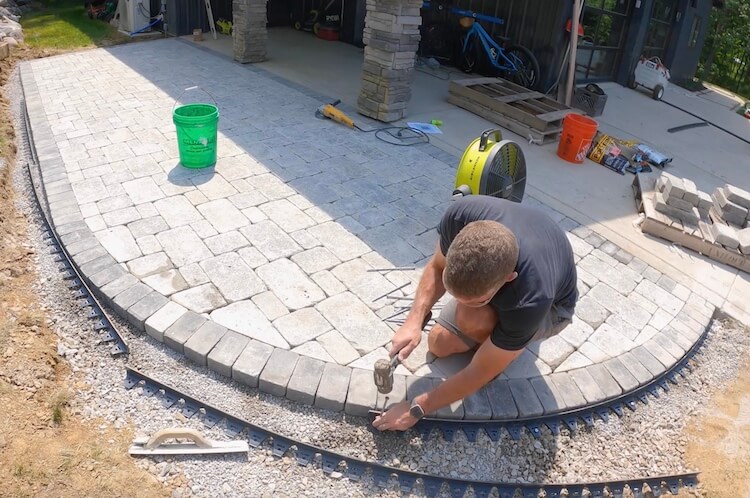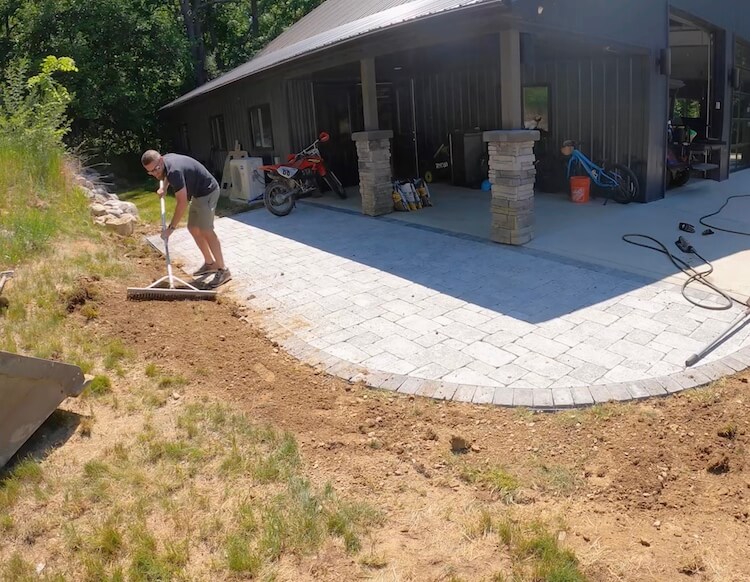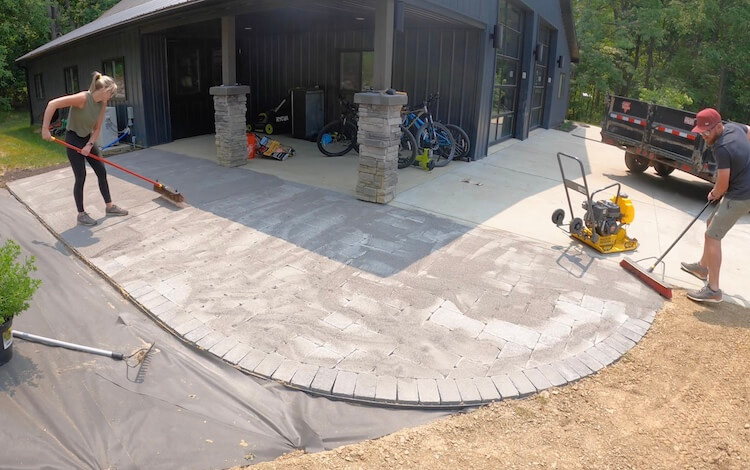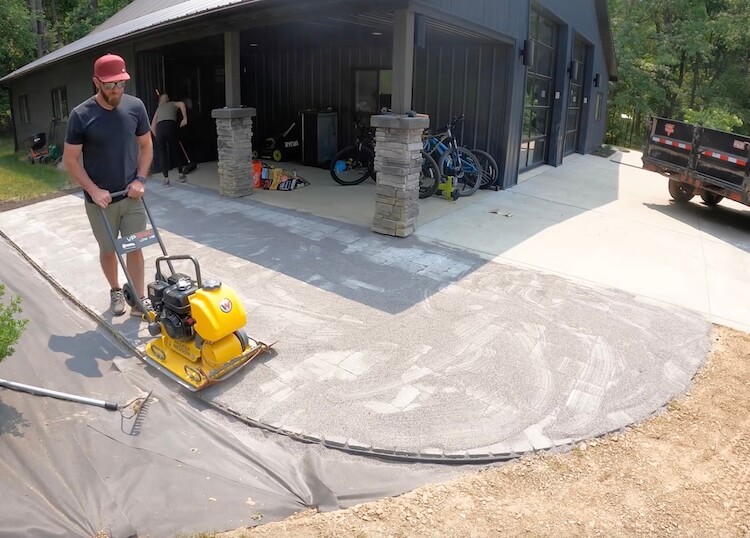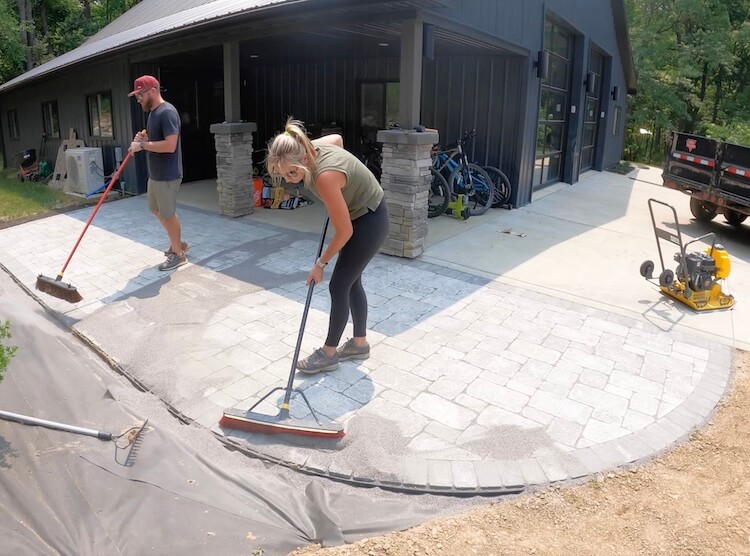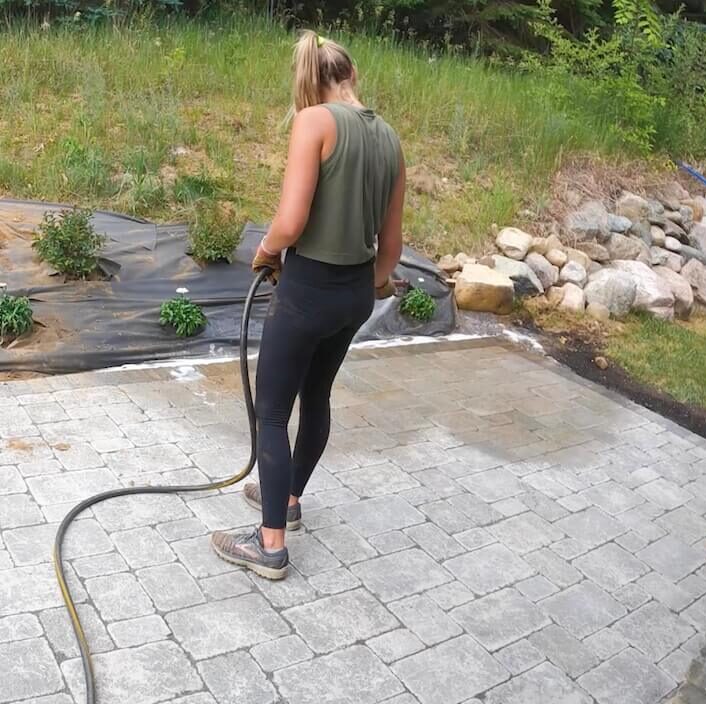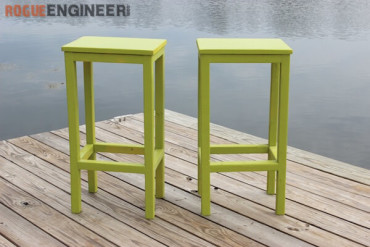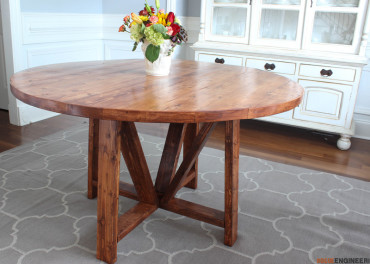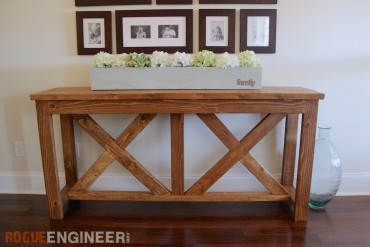On our barn/workshop we have a covered porch that gets used quite a bit. The covered area is a place to store my grill and transport material into the workshop. But it has also become a place to store bikes and other things, leaving us little space to entertain outside. To expand that area for storage and my new Pit Boss grill we decided to build a paver patio. I learned a ton throughout the process of researching and completing this project and I thought it was important to put together a thorough guide for others to learn. Read on to see exactly how it all came together!
Full Project Video
How to Build a Paver Patio
- Excavating
This is honestly the hardest part. Removing about 8-10 inches of soil below the desired height of the patio is required for the prep work. This is based on 4-6 inch base coat, 1 inch top coat and 2-3/4 inch paver. We tried doing it the old fashion way but could tell from the start that it was going to take forever. Luckily, my father-in-law has a skid steer that made quick work of it. For most cases, I would recommend renting a mini skid steer from Home Depot to make it easy on yourself. - Base Coat
For the base coat we are going to put down 4-6 inches of 3/4 inch clean gravel. This does not have the fines and dust in it so it will allow water to drain well.
To start, I put about 1-2 inches of gravel down, really just flatten the area. I then compacted that into the existing soil using a compactor that I rented from Home Depot.
After that, I laid down commercial grade landscape fabric to help lock the layers in place an minimize settling. Followed by the rest of the base coat which gets compacted as well. The final grade should be pitched 1/8 inch per foot and at a height of (1 inch + thickness of paver) from the finished heigh. - Top Coat
The top coat is 1/4 inch or 3/8 inch clean chip stone. For many years people have used sand for the top coat but the problem is that sand will not only wash away into the gravel below but it will hold moisture. The reason for a clean chip stone is that you still get that tight pack below the pavers but with the open grade base, you will be able to allow water to flow through more easily.
That being said, the top coat must be screeded and pitched properly (1/8 inch per foot or just make sure the edge of the bubble on the level is touching the line on the high side) so that your pavers will sit as they should. To do so, I laid 3/4 inch steel pipes and used a 6 foot level to get the grade that I wanted. At this point the top of the steel pipes needs to be at the level of the bottom of where you want your pavers to sit. Then you can begin to add the chip stone.
Adding a little at a time and screeding it to the steel pipes with a long straight edge will make this process easy. Make sure to not walk on or disturb the chip stone after it is screeded. When you get to the end of your pipes, slide them down and do it again until you have completed the whole patio. Don’t worry, you can fill the troughs left by the pipes as you lay your pavers. - Laying the Pavers
For main section of the patio I went with Unilock Brussels Block pavers in the color Limestone (random pattern “W”) and laid a perimeter of perpendicular 1/2 stones “soldier course” in the color dark charcoal. This process is a little time consuming but I enjoyed it and the crazy random pattern was worth it in the end. Using a rubber mallet, the pavers can be set into position if they are a little proud.
I recommend having an extra hand. My wife was a hug help shuffling pavers around for me to lay.
For the corners of the soldier course, I cut two pavers on a 45 and one small square using a wet saw with diamond blade. I thought this added a nice finished touch. - Cutting a Curve on a Paver Patio
First you need to mark the curve that you want to cut. For me, it was a radius. So I figured out the length of the radius I needed and stuck a pin at the pivot point. Then, I used a string and pencil to mark the radius.
To cut patio pavers you need a wet saw with a diamond blade. The water helps keep the blade from heating up and keeps the dust down. You can rent these types of saws however I did have a large angle grinder and was able to complete the process by keeping the cutting surface wet while I cut. Start by lightly scoring the curve, then make deeper passes and complete the cuts, if needed by removing the pavers and cutting all the way through.
After cutting the radius I then followed up with my soldier course. - Paver Patio Edging
For this I used the plastic paver edging and hammered it in place with 10 inch galvanized spikes. However, in my research I did see a lot of people talking about how they prefer concrete as a means of retaining the pavers vs the plastic edging, so I’ll leave that up to you to decide. - Backfill Around the Paver Patio
Using some of the leftover top soil we were then able to backfill around the patio. - Filling Joints with Poly Sand
To fill all the joints in a paver patio and lock it all together, we used G2 Polybind sand. This gets swept into all the joints and the excess is left on top.
Then the sand gets vibrated into the joints with a compactor. Be sure to use a pad under your compactor so you don’t scratch your new pavers. We used a scrap piece of carpet.
Then sweep off all the excess and wet the surface until its starts to repel the water.
This stuff is pretty amazing. It really locks in place and you’ll never have to worry about it washing out like traditional play sand.
We couldn’t be happier with how it turned out and even decided to build a little composite privacy fence to help hide the AC unit. If you’d like to see more on how that came together you can check that tutorial out here.




